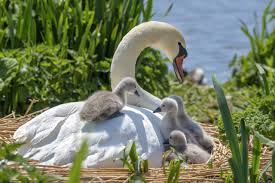Stamp: Black Swan (Cygnus atratus) (Western Australia 1893)
Black Swan (Cygnus atratus) (Western Australia 1893)
01 January (Western Australia ) within release Internal Revenue goes into circulation Stamp Black Swan (Cygnus atratus) face value 1 Australian shilling
| Stamp Black Swan (Cygnus atratus) in catalogues | |
|---|---|
| Michel: | Mi: AU-WA ST5 |
| Forbin: | For: AU-WA D8 |
Stamp is square format.
The Mi: AU-WA 21 stamp was overprinted by new value and I. R. Originally issued in February 1882 for Revenue purposes only, allowed for postal use after 5 September 1893, but rarely used. Clear postal cancellations dated after 5 Sept 1893 needed to prove postal use. Not listed in Gibbons or ScottStamp Black Swan (Cygnus atratus) it reflects the thematic directions:
Animals are multicellular, eukaryotic organisms of the kingdom Animalia (also called Metazoa). All animals are motile, meaning they can move spontaneously and independently, at some point in their lives. Their body plan eventually becomes fixed as they develop, although some undergo a process of metamorphosis later on in their lives. All animals are heterotrophs: they must ingest other organisms or their products for sustenance.
Birds (Aves), a subgroup of Reptiles, are the last living examples of Dinosaurs. They are a group of endothermic vertebrates, characterised by feathers, toothless beaked jaws, the laying of hard-shelled eggs, a high metabolic rate, a four-chambered heart, and a strong yet lightweight skeleton. Birds live worldwide and range in size from the 5 cm (2 in) bee hummingbird to the 2.75 m (9 ft) ostrich. They rank as the class of tetrapods with the most living species, at approximately ten thousand, with more than half of these being passerines, sometimes known as perching birds. Birds are the closest living relatives of crocodilians.
Swans are birds of the genus Cygnus within the family Anatidae. The swans' closest relatives include the geese and ducks. Swans are grouped with the closely related geese in the subfamily Anserinae where they form the tribe Cygnini. Sometimes, they are considered a distinct subfamily, Cygninae.



